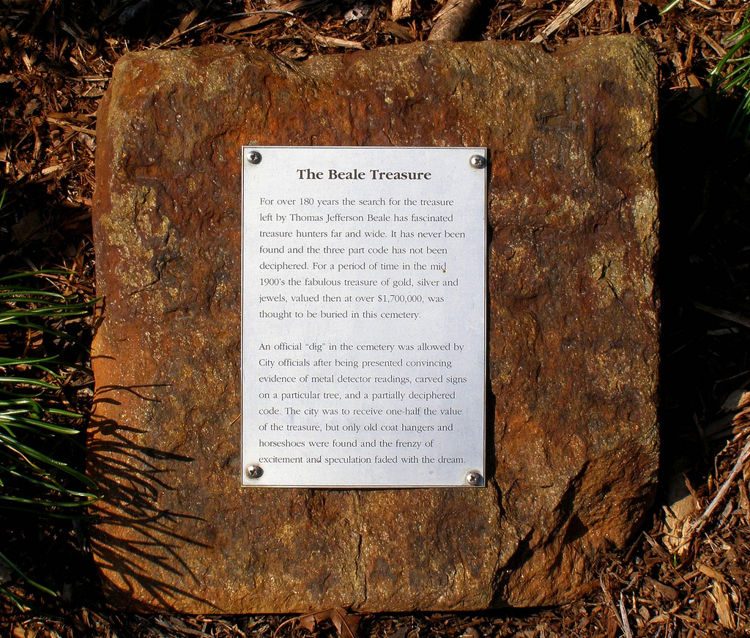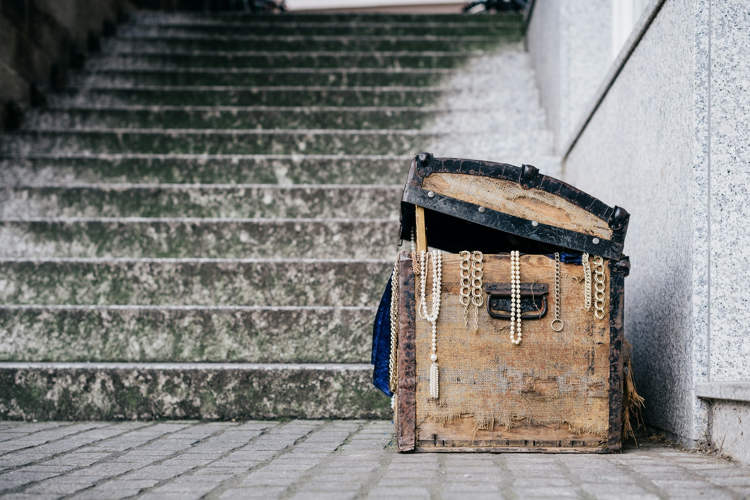For over two centuries, treasure hunters, computer scientists and even the US military have been trying to crack a set of three ciphers and reveal the location of a legendary treasure worth tens of millions of dollars. All have failed, but maybe you can do better?
Thomas J. Beale’s fabled treasure – thousands of pounds of silver gold and precious jewels worth an estimated $60 million – is supposedly buried somewhere in Virginia. Over the last hundred years, many have tried and failed to pinpoint its exact location. Beale, a 19th century adventurer, is said to have discovered his coveted treasure on a hunting trip near the modern New Mexico-Colorado border, and brought it back to his home state of Virginia, where he buried it for safe keeping. He then created three separate ciphers to conceal the exact location, heirs and details of his treasure. So far, only one of the three codes has been solved.

Photo: Virginia Hill/Flickr
Beale’s codes are basic substitution ciphers, where each number represents a letter of the alphabet, which can be found by counting the words in the “key” text that the cipher is based on. As long as the key is known, deciphering this sort of code is fairly straightforward. The thing is no one knows the keys to two of the three Beale treasure ciphers, and that’s a huge problem.
For the past 200 years, trying to find a solution to Thomas J. Beale’s codes without their respective keys has largely been a guessing game. Cryptanalysts, both professional and amateur, consulted all kinds of important texts, from the United States Constitution and the Magna Carta, to the Monroe Doctrine and several of Shakespeare’s plays. None of it worked, and everyone would have probably given up on the treasure a long time ago, if not for an unexpected lucky break which just added fuel to the fire.
In the 19th century, an anonymous amateur cryptanalyst accidentally found the key to Beale’s no.2 cipher – the Declaration of Independence – and revealed a very intriguing part of Beale’s encoded message:

Photo: Historicair/Wikimedia Commons
“I have deposited in the county of Bedford, about four miles from Buford’s, in an excavation or vault, six feet below the surface of the ground …” The adventurer proceeds to describe the treasure and ends his message with “Paper number one describes the exact locality of the vault so that no difficulty will be had in finding it.”
Unfortunately, no one has been able to decipher paper no.1 or paper no. 3, for that matter. Not for lack of trying, that’s for sure. The lucky discovery of the no.2 cipher key and the desire to become a millionaire, inspired a lot of people to try their luck at solving the two remaining ciphers, but they all failed. Cryptologists claim that provided with the keys, even a second-grader could solve Beale’s ciphers, but without those keys, they are virtually unsolvable.
But just because the ciphers remain a mystery doesn’t mean that the treasure can’t be discovered. Technology works too, so it’s not uncommon to see treasure hunters armed with metal detectors, magnetometers or Geiger counters scouring the Virginia countryside in search of Beale’s legendary loot. Some take the spiritual route, relying on the advice of psychic mediums or good ol’ fashioned dowsing rods.

Photo: Historicair/Wikimedia Commons
A Virginia law states that treasure hunters get to keep whatever they find, even if it’s buried on private property – basically finders-keepers – and while that emboldens treasure seekers, it can also cause trouble. Many of these people trespass under the cover of night, dig up holes all over people’s property and just leave them like this. One person, who was convinced that the treasure was buried in an old cemetery, dug up human remains and was arrested for it.
Another concerning pattern observed among Beale’s treasure seekers is that many of those seem to eventually go broke. That’s actually what happened to the anonymous cryptanalist who accidentally broke the no. 2 cipher. According to a 19th century author, inspired by his success, the man proceeded to “neglect family, friends, and all legitimate pursuits for what has proved, so far, the veriest illusion.” And he’s definitely not the only example.
According to Mental Floss, which recently published a detailed article on Beale’s elusive treasure, a man named Stan Czanowski spent $70,000 over seven years on dynamite and bulldozers, and in the 1980s, another man wound up bankrupt after blasting rocks across Virginia for six months.

Photo: Historicair/Wikimedia Commons
“Once you get the Beale treasure in your system, it is hard to get it out. You could get possessed by it. Like drugs or gambling, it can lead a vulnerable person to stake everything on a dream,” said Peter Viemeister, author of The Beale Treasure: A History of a Mystery.
That’s definitely worth considering before you decide to devote your time and money to the pursuit of an elusive buried treasure, no matter how attractive $60 million sounds. Not to mention, that there is no actual guarantee that Beale’s treasure still exists, or ever has, for that matter. All we have to go by is a partial message and two undecipherable codes.






